hamiddetecting
Gold Member
- Joined
- Feb 22, 2012
- Messages
- 6,402
- Reaction score
- 2,521
- Golden Thread
- 0
- Location
- North Pole
- Detector(s) used
- Sovereign GT and Excalibur II, Whites, Garrett, Fisher, Alert, MD,Cscope,Tesoro, Compas, XP, Long Rs
- Primary Interest:
- All Treasure Hunting
Hello:
These my finds:Finds night(black sand). Finds morning early(simple sand)
Coins usables very oxidy, for the big(green) i cleaned it. Silver: Earring, chains, bracelet...
Gold ring..
Color of gold:
Whereas most other pure metals are gray or silvery white, gold is yellow. This color is determined by the density of loosely bound (valence) electrons; those electrons oscillate as a collective "plasma" medium described in terms of a quasiparticle called plasmon. The frequency of these oscillations lies in the ultraviolet range for most metals, but it falls into the visible range for gold due to subtle relativistic effects that affect the orbitals around gold atoms. Similar effects impart a golden hue to metallic caesium.
Common colored gold alloys such as rose gold can be created by the addition of various amounts of copper and silver, as indicated in the triangular diagram to the left. Alloys containing palladium or nickel are also important in commercial jewelry as these produce white gold alloys. Less commonly, addition of manganese, aluminium, iron, indium and other elements can produce more unusual colors of gold for various applications.
Thank you for reading and looking.
Happy hunting
Regards Hamid

These my finds:Finds night(black sand). Finds morning early(simple sand)
Coins usables very oxidy, for the big(green) i cleaned it. Silver: Earring, chains, bracelet...
Gold ring..
Color of gold:
Whereas most other pure metals are gray or silvery white, gold is yellow. This color is determined by the density of loosely bound (valence) electrons; those electrons oscillate as a collective "plasma" medium described in terms of a quasiparticle called plasmon. The frequency of these oscillations lies in the ultraviolet range for most metals, but it falls into the visible range for gold due to subtle relativistic effects that affect the orbitals around gold atoms. Similar effects impart a golden hue to metallic caesium.
Common colored gold alloys such as rose gold can be created by the addition of various amounts of copper and silver, as indicated in the triangular diagram to the left. Alloys containing palladium or nickel are also important in commercial jewelry as these produce white gold alloys. Less commonly, addition of manganese, aluminium, iron, indium and other elements can produce more unusual colors of gold for various applications.
Thank you for reading and looking.
Happy hunting

Regards Hamid
Amazon Forum Fav 👍
Attachments
-
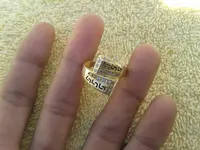 20130213_110101.webp301.9 KB · Views: 302
20130213_110101.webp301.9 KB · Views: 302 -
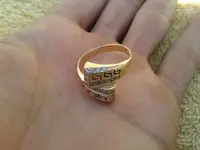 20130213_110156.webp183 KB · Views: 329
20130213_110156.webp183 KB · Views: 329 -
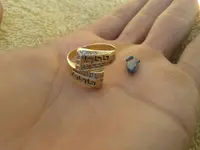 20130213_110248.webp199.3 KB · Views: 342
20130213_110248.webp199.3 KB · Views: 342 -
 Ag-Au-Cu-colours-english.svg.webp7.8 KB · Views: 491
Ag-Au-Cu-colours-english.svg.webp7.8 KB · Views: 491 -
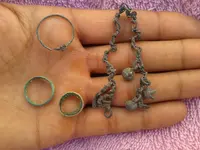 20130209_125541.webp372 KB · Views: 315
20130209_125541.webp372 KB · Views: 315 -
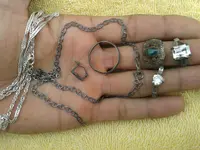 20130212_140639.webp467.4 KB · Views: 291
20130212_140639.webp467.4 KB · Views: 291 -
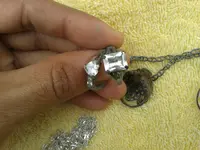 20130212_140718.webp352.3 KB · Views: 281
20130212_140718.webp352.3 KB · Views: 281 -
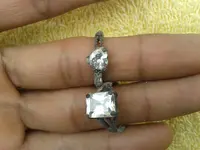 20130212_140830.webp275.8 KB · Views: 275
20130212_140830.webp275.8 KB · Views: 275 -
 12×.webp184.7 KB · Views: 270
12×.webp184.7 KB · Views: 270
Upvote
0








